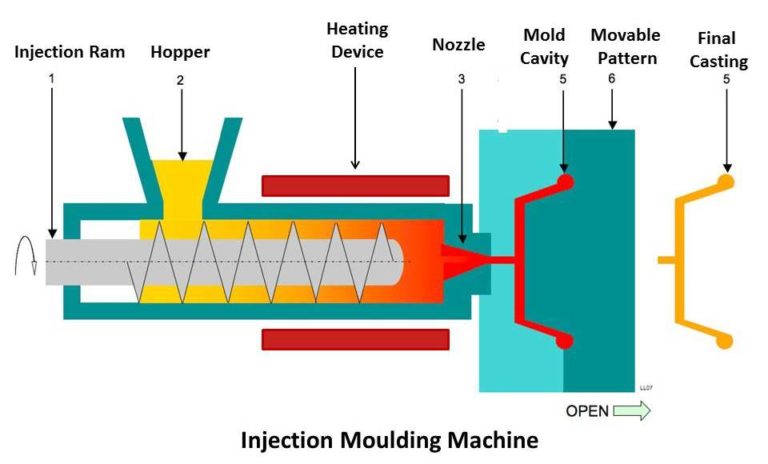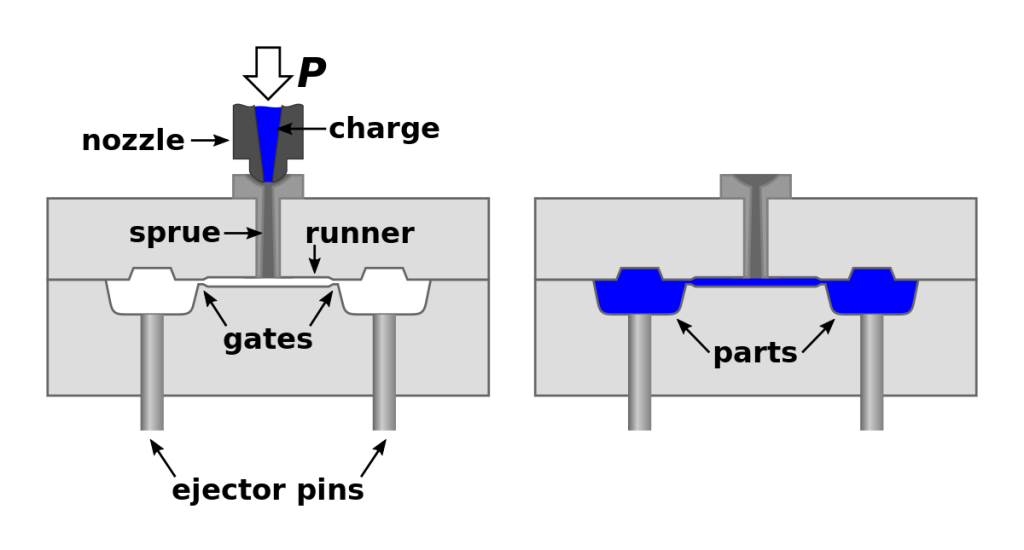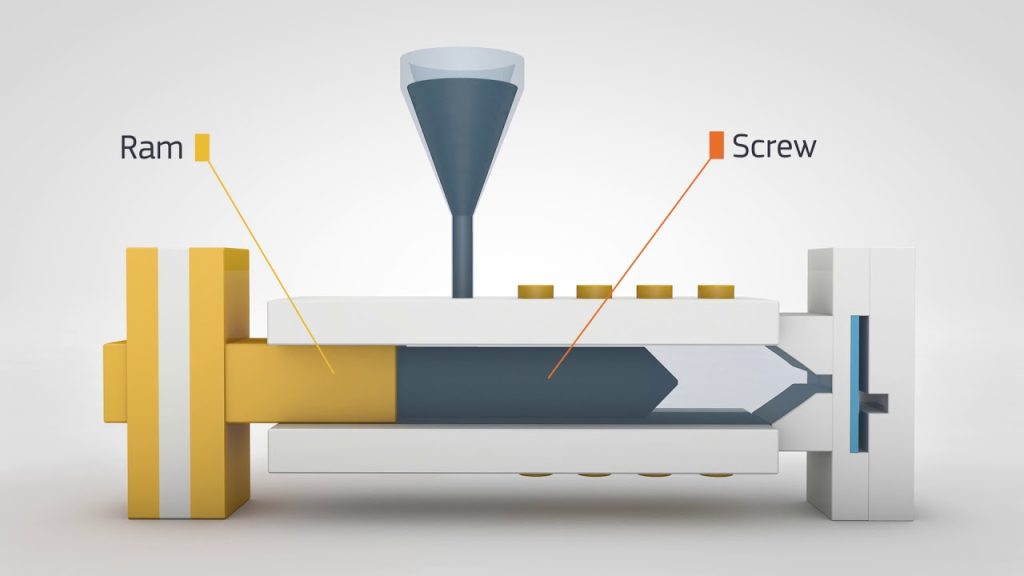Table of Contents
- How Do Plastic Injection Molding Machines Work?
- Frequently Asked Questions
- How does a plastic injection molding machine work?
- What are the parts of a plastic injection molding machine?
- What types of plastic can be used in plastic injection molding machines?
- What are the advantages of using plastic injection molding machines?
- What are the limitations of using plastic injection molding machines?
Plastic injection molding machines are ubiquitous in the manufacturing industry. But have you ever wondered how they actually work? These machines are responsible for producing a wide range of plastic products, from simple toys to complex medical devices. In this article, we’ll dive into the fascinating world of plastic injection molding and explore the mechanics behind these powerful machines.
Whether you’re a seasoned engineer or simply curious about the manufacturing process, understanding how plastic injection molding machines work is sure to pique your interest. From the injection unit to the clamping system, each component plays a crucial role in the overall process. So, let’s take a closer look and discover the magic behind these essential machines.
How Do Plastic Injection Molding Machines Work?
Plastic injection molding is a widely used manufacturing process that produces large quantities of identical parts. It involves melting plastic pellets and injecting them into a mold. Once the plastic cools and hardens, the mold is opened and the part is ejected. In this article, we will take a closer look at how plastic injection molding machines work.
1. The Injection Unit
The injection unit is responsible for melting and injecting the plastic into the mold. It consists of a hopper, screw, and barrel. The hopper holds the plastic pellets, which are then fed into the heated barrel. The screw rotates and pushes the plastic forward, melting it as it moves towards the mold. Once the plastic has reached the desired temperature and consistency, the injection process begins.
During the injection process, the screw continues to rotate and push the plastic into the mold. The plastic is injected under pressure, filling the entire cavity of the mold. The pressure is maintained until the plastic has cooled and solidified. This ensures that the part is free of voids, warping, and other defects.
2. The Clamping Unit
The clamping unit is responsible for holding the mold together during the injection process. It consists of two platens, which are connected by a hydraulic cylinder. The bottom platen is fixed, while the top platen can move up and down. When the mold is closed, the two platens come together and create a cavity that is the same shape as the part being produced.
The hydraulic cylinder applies force to the top platen, holding the mold closed during the injection process. The force required depends on the size and complexity of the part being produced. Once the plastic has cooled and solidified, the hydraulic cylinder releases the force and the mold is opened. The part is then ejected from the mold.
3. The Mold
The mold is the most important part of the plastic injection molding process. It determines the shape, size, and quality of the part being produced. The mold consists of two halves, which are held together by the clamping unit during the injection process.
The mold is made of steel and is designed to withstand the high pressures and temperatures of the injection process. It is also designed to be easily reconfigured, allowing for different parts to be produced using the same machine.
4. The Cooling System
The cooling system is responsible for cooling the plastic after it has been injected into the mold. It consists of a series of channels that run through the mold. These channels are filled with water or oil, which helps to cool the plastic as it passes through them.
The cooling time depends on the size and complexity of the part being produced. For small parts, the cooling time may be only a few seconds, while for larger parts, it may be several minutes. The cooling time is critical, as it determines the quality and strength of the finished part.
5. The Ejection System
The ejection system is responsible for removing the part from the mold after it has cooled and solidified. It consists of ejector pins, which are located on the moving platen. Once the mold is opened, the ejector pins push the part out of the mold and into a collection bin.
The ejection system must be carefully designed to avoid damaging the part during ejection. It must also be able to handle different types of parts, including those with complex geometries and undercuts.
6. Benefits of Plastic Injection Molding
Plastic injection molding offers many benefits over other manufacturing processes. It is a highly efficient process that can produce large quantities of identical parts with high precision and accuracy. It is also a cost-effective process, as it requires minimal labor and can be automated to increase production rates.
Plastic injection molding is also a versatile process, as it can be used to produce parts with complex geometries and undercuts. It can also be used to produce parts with different colors and finishes, eliminating the need for post-production painting or finishing.
7. Plastic Injection Molding vs. Other Manufacturing Processes
Plastic injection molding is often compared to other manufacturing processes, such as die casting and stamping. While each process has its advantages and disadvantages, plastic injection molding is often preferred for its versatility, efficiency, and cost-effectiveness.
Die casting, for example, is a process that uses high pressure to force molten metal into a mold. While it is suitable for producing metal parts with high precision and accuracy, it is not as versatile as plastic injection molding. It is also a more expensive process, as it requires specialized equipment and tooling.
Stamping is another manufacturing process that is used to produce metal parts. It involves cutting and shaping metal sheets using a press. While it is a cost-effective process for producing large quantities of simple parts, it is not suitable for producing parts with complex geometries or undercuts.
8. Applications of Plastic Injection Molding
Plastic injection molding is used to produce a wide range of products, including automotive parts, consumer goods, medical devices, and electronic components. It is also used to produce toys, household items, and packaging materials.
The versatility and efficiency of plastic injection molding make it a popular choice for manufacturers in many industries. It is also a process that can be easily scaled up or down to meet changing demand.
9. Future of Plastic Injection Molding
The future of plastic injection molding looks bright, as advances in technology continue to improve the efficiency and versatility of the process. 3D printing, for example, is a technology that is being used to create molds for plastic injection molding. This allows for faster prototyping and reduces the time and cost associated with creating molds.
Other advances, such as the use of robotics and automation, are also improving the efficiency and cost-effectiveness of plastic injection molding. These advances are making it possible to produce larger quantities of high-quality parts at lower costs.
10. Conclusion
Plastic injection molding is a highly efficient and cost-effective manufacturing process that is used to produce large quantities of identical parts. It involves melting plastic pellets and injecting them into a mold, where they cool and solidify to form the finished part. The process is versatile, efficient, and can be used to produce parts with complex geometries and undercuts. Advances in technology are continuing to improve the efficiency and versatility of the process, making it a popular choice for manufacturers in many industries.
Frequently Asked Questions
Below are some frequently asked questions about how plastic injection molding machines work.
How does a plastic injection molding machine work?
Plastic injection molding is a manufacturing process that involves melting plastic pellets and injecting them into a mold to create a specific shape. The process is done using a plastic injection molding machine.
The process starts with feeding plastic pellets into the machine’s hopper. The pellets are then heated and melted in the machine’s barrel. Once the plastic is melted, it is injected into a mold cavity under high pressure. The plastic then cools and solidifies in the mold, and the finished part is ejected from the machine.
What are the parts of a plastic injection molding machine?
A plastic injection molding machine consists of several parts, including the hopper, the barrel, the screw, the mold, the platen, and the hydraulic system.
The hopper is where the plastic pellets are fed into the machine. The barrel is where the plastic is heated and melted. The screw moves the melted plastic from the barrel and into the mold. The mold is where the plastic is shaped into the desired part. The platen holds the mold in place. The hydraulic system provides the pressure needed to inject the plastic into the mold.
What types of plastic can be used in plastic injection molding machines?
Plastic injection molding machines can use a variety of plastics, including thermoplastics and thermosetting plastics. Thermoplastics can be melted and re-melted multiple times, while thermosetting plastics cannot be melted once they are formed.
Some common thermoplastics used in plastic injection molding include polyethylene, polypropylene, and polystyrene. Common thermosetting plastics include epoxy and phenolic.
What are the advantages of using plastic injection molding machines?
There are several advantages to using plastic injection molding machines. One advantage is that the process is highly efficient and can produce large quantities of parts quickly. Another advantage is that the parts produced are highly accurate and precise, with consistent dimensions and quality.
Additionally, plastic injection molding is a versatile process that can be used to produce parts of varying shapes, sizes, and complexities. The process is also highly automated, which means it can be done with minimal labor and supervision.
What are the limitations of using plastic injection molding machines?
While plastic injection molding machines have many advantages, there are also some limitations to the process. One limitation is that the initial setup costs can be high, as molds must be designed and fabricated before production can begin.
Additionally, the process may not be suitable for producing certain types of parts, such as those with complex geometries or those that require a high degree of flexibility. Finally, the process may not be suitable for producing parts with certain types of materials, such as metals or ceramics.
In conclusion, plastic injection molding machines are a critical component of modern manufacturing processes. These machines work by melting plastic pellets and injecting the molten plastic into a mold to create a desired shape. The process is highly customizable and can produce a wide range of products with a high degree of precision and consistency.
One of the key advantages of plastic injection molding is its ability to produce complex shapes with intricate details. The use of computer-aided design (CAD) software and advanced molding techniques has made it possible to create parts that were previously impossible to manufacture.
As the demand for high-quality plastic products continues to grow, so too will the importance of plastic injection molding machines. With their ability to produce large volumes of products quickly and efficiently, these machines are an essential tool for manufacturers across a wide range of industries.
Request a quote today!
[contact-form-7 id="1578" title="Contact form"]
Please compress the file into a ZIP or RAR file before uploading. Alternatively, send through your RFQ by email.
enquires@unitymanufacture.com





